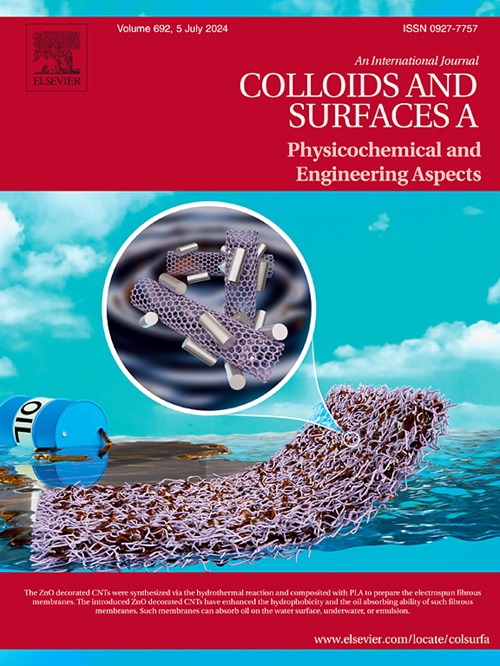Molecular design and screening of hydroxamic acid collectors for cassiterite flotation
IF 4.9
2区 化学
Q2 CHEMISTRY, PHYSICAL
Colloids and Surfaces A: Physicochemical and Engineering Aspects
Pub Date : 2025-04-01
DOI:10.1016/j.colsurfa.2025.136809
引用次数: 0
Abstract
Collectors serve as critical components in froth flotation processes. This study synthesized and evaluated three hydroxamic acid collectors for cassiterite separation through rational molecular design incorporating functional group enhancement, carbon chain extension, and isomerism principles. Density functional theory (DFT) simulations and quantum chemical analyses, including spatial configuration optimization, Mulliken charge distribution, electrostatic potential mapping, Fukui function analysis, and frontier molecular orbital calculations, were systematically employed to investigate collector-mineral interactions. Surface adsorption energy computations identified three optimized collectors, with subsequent adsorption modeling elucidating mineral surface interaction mechanisms. Flotation tests demonstrated that 2-BPA, PTPA, and PMBA showed greater affinity for cassiterite than BHA under neutral conditions, while all had a low calcite recovery rate of less than 15 % in neutral to alkaline conditions. Quantum chemical analyses revealed that both O and Sn atoms on the cassiterite surface act as potential active sites, while O atoms on the calcite surface exhibit high activity with electron-deficient groups. Electrostatic potential and Fukui function analysis suggesting that O atom connected to N atom in the oxime group is more inclined to adsorb with the active sites on cassiterite surface. Theoretical calculations confirm these designed collectors enable effective cassiterite-calcite separation under optimized conditions. This work establishes fundamental design principles for flotation reagent development and provides theoretical frameworks for combined reagent systems in tin ore beneficiation.
求助全文
约1分钟内获得全文
求助全文
来源期刊
CiteScore
8.70
自引率
9.60%
发文量
2421
审稿时长
56 days
期刊介绍:
Colloids and Surfaces A: Physicochemical and Engineering Aspects is an international journal devoted to the science underlying applications of colloids and interfacial phenomena.
The journal aims at publishing high quality research papers featuring new materials or new insights into the role of colloid and interface science in (for example) food, energy, minerals processing, pharmaceuticals or the environment.

 求助内容:
求助内容: 应助结果提醒方式:
应助结果提醒方式:


